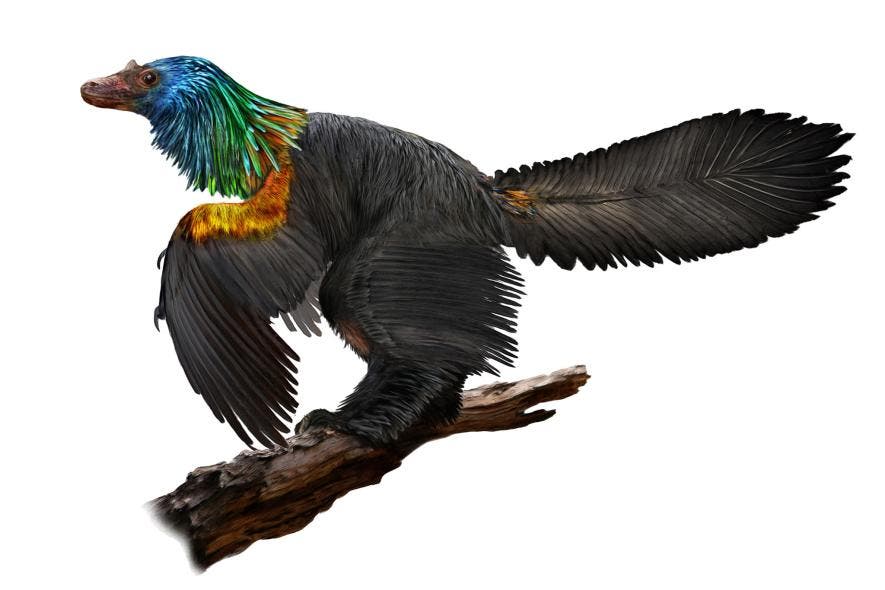A new bird-like dinosaur was discovered in the North-East of China, in the Hebei Province. Its chest, neck and head feathers resemble those of hummingbirds. Scientists named him “Caihong juji,” Mandarin for “rainbow with the big crest.”

Credits: The Field Museum
Caihong juji gained its name thanks to its exquisite plums but also because of another feature. Its head is very similar to a Velociraptor‘s, with a bony crest running between the eyes. Scientists believe the crest played a significant role in mating, along with the shiny feathers.
“Its plumage was a shiny rainbow of iridescent colors … but it didn’t stop there,” said paleontologist Steve Brusatte from University of Edinburgh, a reviewer of the paper. “It also had a funky crest of bone sticking up in front of its eyes, which was probably a display structure as well.”

Credits: The Field Museum
This dino-bird used to live 161 million years ago in the Jurrasic forests and fed on small mammals and lizards. Its body was roughly the size of a duck’s, weighing approximately a pound.
The dinosaur’s beautiful rainbow feathers might have had a role in reproduction. Just like a peacock, Caihong is supposed to have displayed his plumage during mating rituals or social encounters.

“I was shocked by its beautifully preserved feathers, even though I had seen many feathered dinosaur fossils previously,” said Xing Xu, a paleontologist at the Chinese Academy of Sciences and a co-author of the study.
But how can scientist tell whether Caihong’s feathers shimmered like a hummingbird’s? They analyzed the fossil and found a special kind of organelles within. They are called melanosomes and are vestiges of pigment sacs. It’s because of their pancake shape and distribution that the feathers exhibit iridescence (the ability to change color as the angle shifts).

Via Pixabay/Nicman
Even though Caihong’s body was entirely covered by plums, researchers highly doubt the dinosaur was able to fly. It appears that the feathers only had insulative and social roles.
This is not the first time a sparkling dinosaur was discovered. In 2012, paleontologists found that Mictoraptor, another feathered dinosaur, exhibited blueish reflexions in the sunlight, alike crows, and ravens.
Unlike Microraptor, Caihong was not iridescent all over the body. The rest of its plumage was black, maybe to contrast his glittering, attractive rainbow feathers.
“When we put these data on the evolutionary tree, we recognize two different ways of creating iridescent color in small raptor dinosaurs before the origin of birds,” says co-author Julia Clarke, a paleontologist at the University of Texas at Austin.
The paper was published the journal Nature Communications.


